PDF of this article (159 KB)
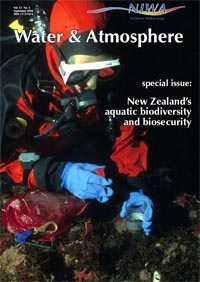
Ashley Rowden Malcolm Clark
Years of investigations are beginning to reveal the secrets of seamount biodiversity.

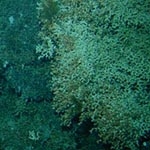
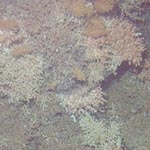
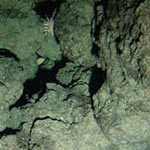
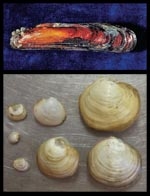
Rising hundreds to thousands of metres above the surrounding seafloor, seamounts are often volanic in origin, have a distinctive cone shape, and are usually composed of hard substrates. They are known to sustain productive ecosystems that generally support high levels of biodiversity. Seamounts are prominent and widely distributed features of the New Zealand marine environment, and also the focus of important commercial fisheries. However, very little is known about the biodiversity or the ecology of the organisms that are associated with them. Nor do we understand the effects that human activities have on their physical and biological integrity. Since 1998, NIWA has been funded by the Foundation for Research, Science and Technology (FRST) and also supported by the Ministry of Fisheries (MFish) to carry out research on the physical and biological features of seamounts in the New Zealand region, investigate the effects of fishing, examine the role and dynamics of seamounts, and help ensure the sustainable use of fisheries resources.
Surveys and samples to form the big picture
Studying seamounts is not easy: they generally occur off the continental shelf in deep water, distant from the New Zealand coast and require a range of scientific techniques to characterise their physical and biological attributes. We have used altimetry data from satellites to locate their position and general bathymetry, as well as archived sounding data that had been used to produce seabed charts. Satellite-derived data have also been used to assess the levels of primary productivity of nearby waters. Multibeam acoustic mapping surveys have provided more detailed information on bathymetry and composition of seamount substrates, which we have ground-truthed by taking geological samples and photographs of the seabed. We have also used seabed photographs to describe the macro-invertebrate assemblages that occur on seamounts. In order to make reliable species identifications, it has been necessary to take direct samples on or of the bottom substrates using sleds, trawls or grabs. Such sampling gear has been deployed on 30 seamounts throughout the New Zealand region during 9 seamount-specific voyages by NIWA’s RV Tangaroa and RV Kaharoa. We have studied the fish assemblages associated with New Zealand’s seamounts using research trawls as part of MFish-funded stock-assessment surveys. We have also used MFish data to characterise the distribution and level of fishing activity at seamounts in the region.
Beginning to fill in the blanks
We have identified over 800 seamounts in the New Zealand region that are greater than 100 m high. They vary widely in their water depth, surface area of the seafloor, geological origin, age, and associated water mass and level of primary productivity. For over 400 of the region’s seamounts, where such data are complete, we have identified 12 seamount-type groupings based on biologically meaningful environmental parameters. Some of these groupings are widely distributed throughout the region while others are more spatially restricted.
The hundreds of direct samples and the thousands of seabed photographs taken by NIWA’s research surveys have begun to reveal the extent of the macro-invertebrate diversity associated with seamounts in the region. On some seamounts diversity is very high; for example, on the Chatham Rise we have found habitat-forming deep-sea coral species such as Solenosmilia variabilis and Madrepora oculata on some seamounts. Such stony corals can form fairly extensive “reefs” or “thickets” and support a wide array of other organisms such as brittlestars, bristle worms and squat lobsters. On other seamounts, such as the volcanoes associated with the Kermadec Ridge, the number of species can be much smaller. Here, on volcanic substrates (pumice, lavas and glasses) that might be unsuitable for the sessile (attaching) organisms, the faunas are nonetheless particularly distinct. Adjacent seamounts on the same ridge system, and separated by only tens of kilometres, have assemblages which are almost entirely different in their composition. We have also found that populations of the same species can be relatively genetically distinct.
Fish on seamounts and fishing impacts
A NIWA study has shown that several fish species, including black oreo and black cardinalfish, can occur more often on seamounts than above adjacent slope areas of the seafloor. Analyses have also revealed that the species composition of fish caught on seamounts is relatively consistent, although there are some differences, for example between the Challenger Plateau and East Cape. The enhanced productivity around some seamounts attracts aggregations of fish species, which makes some seamount-associated fish a target for commercial fishing. However, the high levels of biodiversity associated with habitat-forming corals and the distinct nature of biodiversity of even individual seamounts can make seamounts particularly fragile and vulnerable habitats.
Assessments of fishing activity indicate that by 2000 about 80% of known seamounts that occur in the appropriate depth range of some target fish species had been fished. In order to quantify the effects of fishing on the benthic assemblages of seamounts and to begin to develop an understanding about how such activity can be mitigated, NIWA studied seamounts in an area known as the Graveyard complex on the northern slope of the Chatham Rise. This investigation examined four “fished” and four “unfished” features; the results indicate that fishing has influenced the seamount habitat – specifically through modifying the abundance and distribution of habitat-forming corals. We found a significant difference between the macro-invertebrate assemblage composition on fished and unfished seamounts, which we attribute to the modification of the habitat.
Challenging work ahead
Many of the results of the research must be considered preliminary. Despite the effort to date by New Zealand scientists and their international collaborators, we have only begun to analyse the biodiversity of the New Zealand seamounts. Each survey can recover hundreds of macro-invertebrate species, and establishing the identity of many of these organisms is a difficult and time-consuming task. A significant proportion of the New Zealand seamount fauna has not been encountered before. There are insufficient taxonomists in New Zealand, and indeed globally, for the identification of sampled fauna and flora to match the needs of those who study biodiversity. Our results to date indicate that many of the species new to science are only found on one or a small number of seamounts. However, this apparently high proportion of “endemism” may be the result of the relatively limited sampling (so far only 30 seamounts out of 800). Thus, in order to better understand seamount biodiversity, and how it might be affected by human activities, it is necessary to sample more seamounts in the region. This new sampling effort can be guided by what NIWA has already learned about the distribution and abundance of different types of seamounts and their fauna.
A number of seamounts associated with the Kermadec Ridge have already been sampled. These merit further research into biodiversity patterns because of their linear distribution across a broad latitudinal range and their special faunas. NIWA’s studies have uncovered species of shrimps, mussels and clams that are associated with volcanic hydrothermal vents. These remarkable animals survive with the aid of bacteria that utilise chemicals emitted in the hot vent fluids. This particular and special type of symbiotic relationship has been known for less than 30 years; its discovery revealed that not all life in the deep sea relies ultimately on energy derived from the sun. The number of vent sites in the world that have received scientific attention is relatively small, and further exploration of New Zealand’s vent sites and their fauna will provide important global understanding about such chemosynthetic ecosystems.
There are many other avenues of seamount research which NIWA wishes to pursue, all of which will not only broaden knowledge about New Zealand’s marine biodiversity, but will also inform environmental managers about the threats posed by human activities and how to mitigate their effects.
Teachers’ resource for NCEA AS: Biology 2.5, 2.9, 3.5; Science 1.5, 2.2; Geography 2.1. See other curriculum connections at www.niwa.co.nz/pubs/wa/resources
Ashley Rowden and Malcolm Clark are based at NIWA in Wellington.
